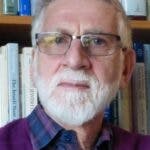Published: 20 June 2024
Last updated: 20 June 2024
When courses on Israel Studies first began in universities several decades ago, they were depicted by some as teaching a fictitious, invented subject – nothing less than an offshoot of the hasbarah industry. For those in communal leadership, it was often seen as just that – an opportunity to promote Israel within academia.
The problem was that independently-minded academics – and especially Jewish ones – often refused to follow a conventional pathway and viewed the academic classroom as a sanctuary for debate and analysis. Academia in their eyes was not an adjunct of the communal endeavour.
There was, therefore, a world of difference between informatzia (information), hasbara (explanation) and ta’amula (propaganda).
For many academics, the goal was to strive for objectivity in this sensitive area of discourse but also to demonstrate that there were different interpretations of episodes and events. There were no definitive “alternative facts”, as the devout of Trumpland would say.






Comments
No comments on this article yet. Be the first to add your thoughts.